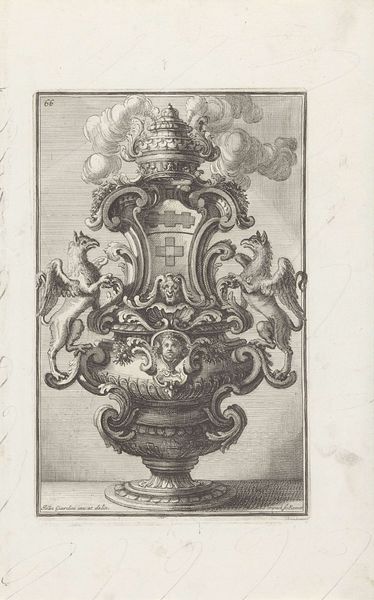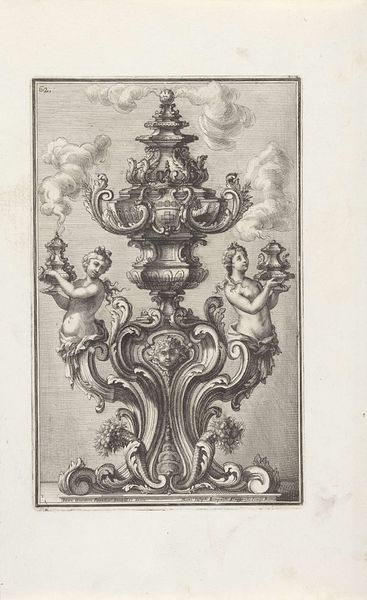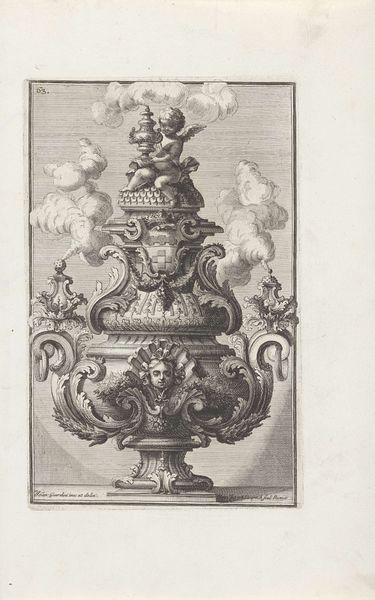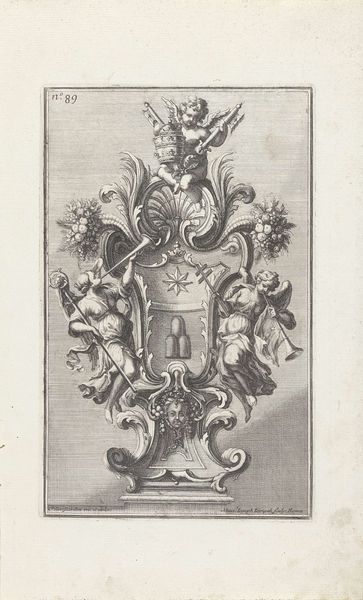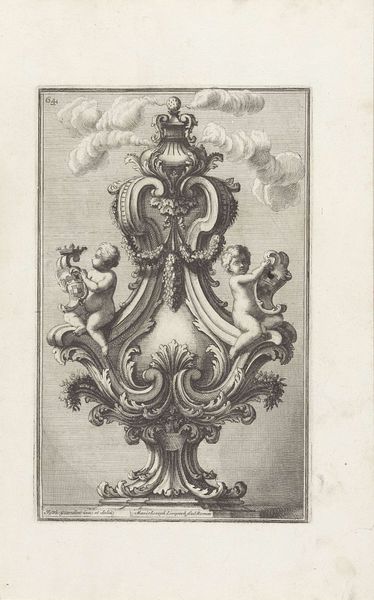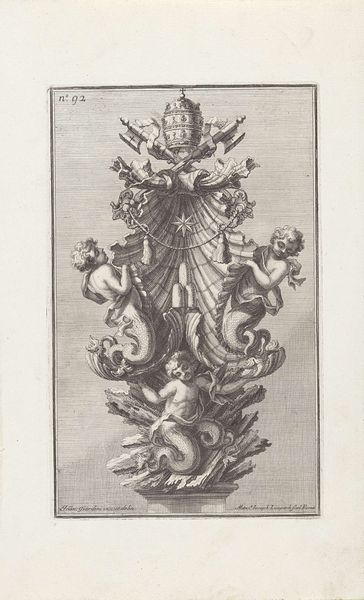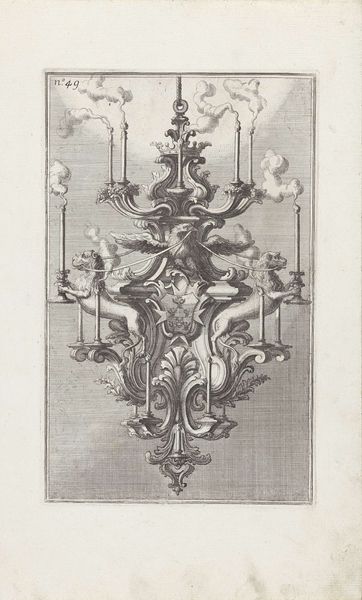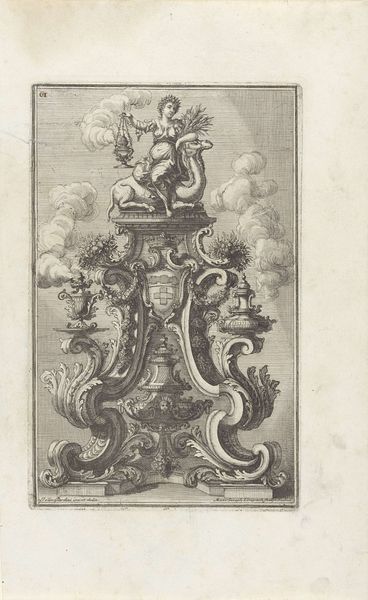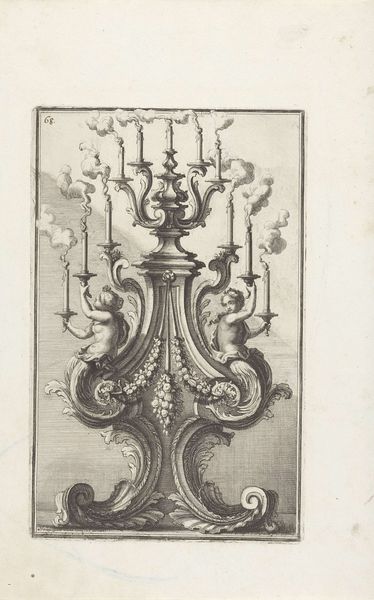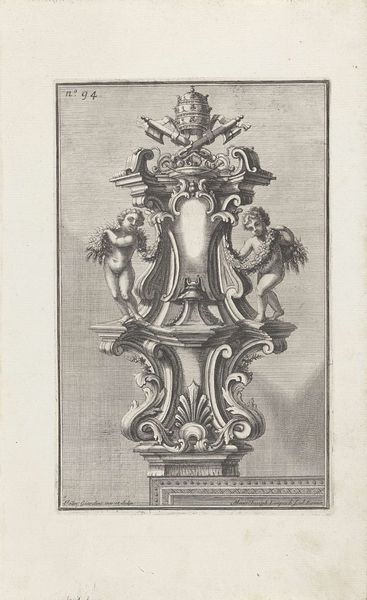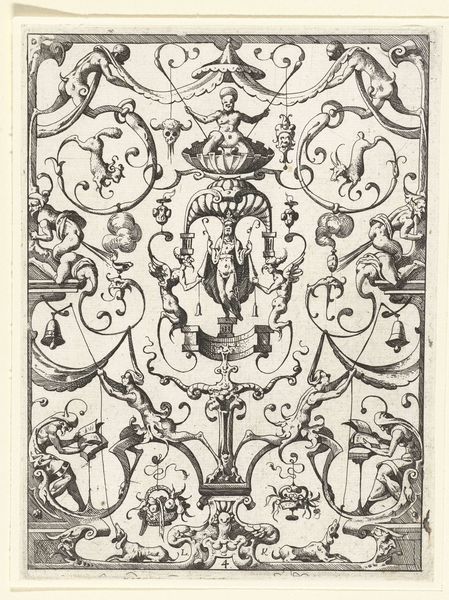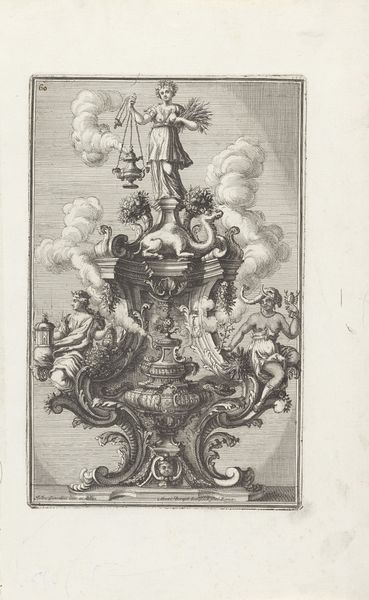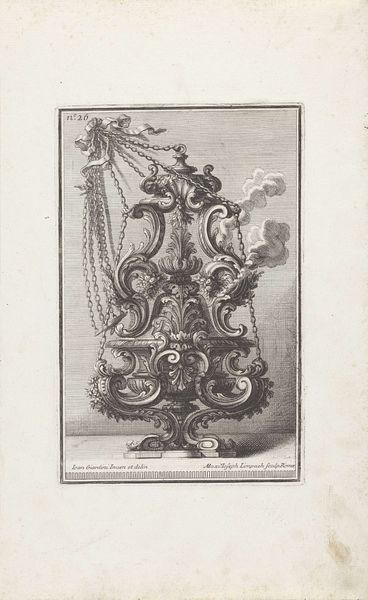
Ornament met de personificaties van Hoop en Liefde en het wapen van Paus Clemens XI 1714
0:00
0:00
maximilianjosephlimpach
Rijksmuseum
print, engraving
#
allegory
#
baroque
# print
#
history-painting
#
decorative-art
#
engraving
Dimensions: height 275 mm, width 173 mm
Copyright: Rijks Museum: Open Domain
Curator: The item before us is a decorative print titled "Ornament met de personificaties van Hoop en Liefde en het wapen van Paus Clemens XI," dating back to 1714. Editor: The crisp detail of the engraving is immediately striking. I wonder about the purpose of such an elaborate design – did it influence silversmiths, perhaps, or ceramicists? Curator: Likely. The artist, Maximilian Joseph Limpach, fashioned it during the Baroque period, when the boundaries between the fine and decorative arts were far more fluid. These kinds of prints were vital as disseminators of design ideas. The print would have served as a crucial link in material production, wasn't an object appreciated solely as a thing of "high art" on a wall, but could find its way to the shops of local artisans who looked to emulate design for wealthy patrons, even using this print as something of a "catalog" to choose from. Editor: Yes, and let's not overlook the central figure—Pope Clement XI, whose coat of arms crowns the structure. Its papal insignia lends itself to questions around the imagery that legitimized political power. Where did this particular style originate and what are it’s socio-political underpinnings? Curator: Limpach has created this engraving from a design by Peter Paul Rubens. It represents not merely artistic skill, but also significant artisanal labor and the printing processes used. There is detail added by etching on top of engraving. And there is clearly a well established iconography involved: consider the allegorical figures representing Hope and Love and how they are integral to the design's meaning and function, serving as both aesthetic enhancements and carriers of symbolic value. What sort of workshops produced things of this level of complexity, do you think? Editor: These institutions must be placed within their economic moment, including the financial conditions that support them and dictate who has access to such ornate visual trappings. Also how prints such as this served a crucial public role by visually manifesting power at all levels. Curator: Exactly. This wasn't just about aesthetics; it was a crucial part of the era's visual culture. It provided workshops across different materials a vision for objects meant for religious or wealthy households. Editor: Food for thought. Now I understand the intricate layering here, this exploration highlights much more than meets the eye.
Comments
No comments
Be the first to comment and join the conversation on the ultimate creative platform.
